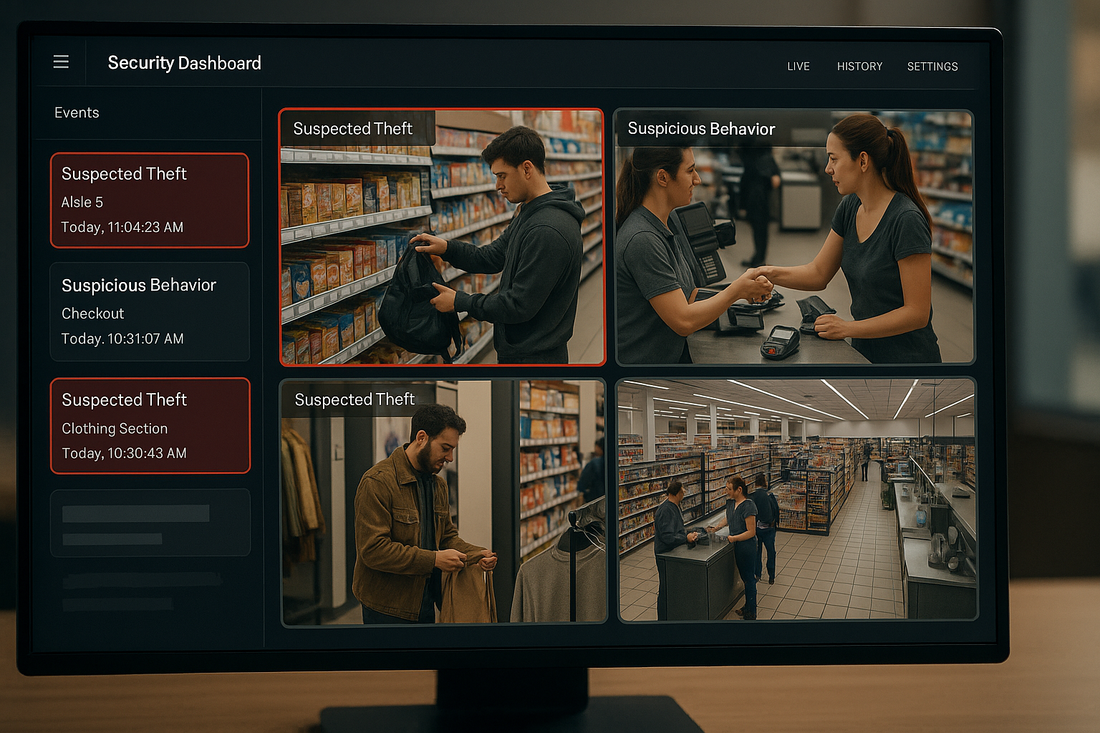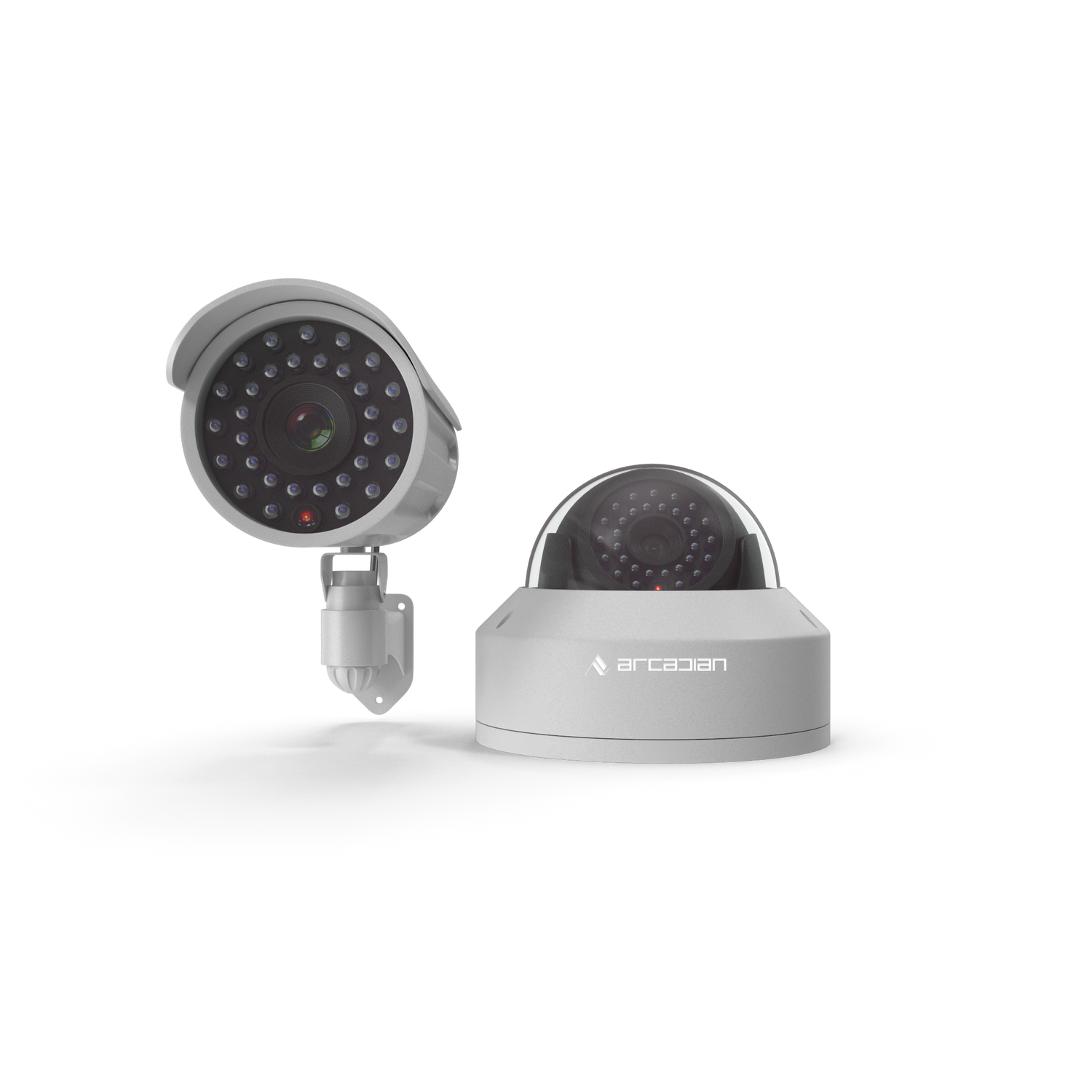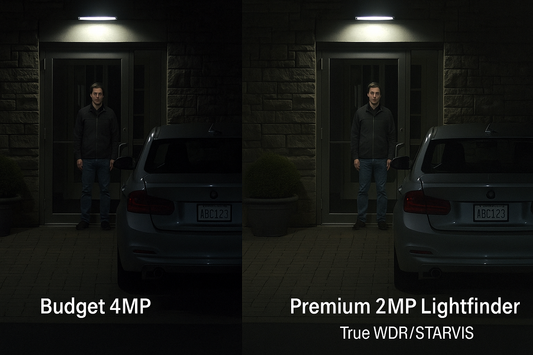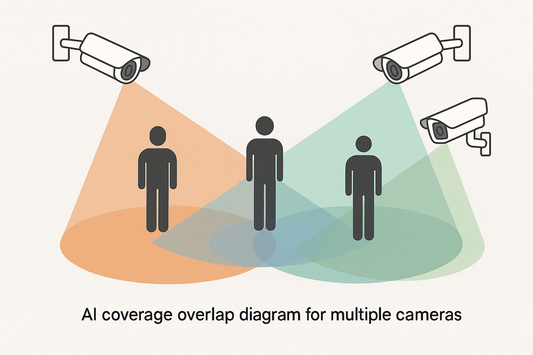Physical Security Measures for Retail: Why Doing “Everything” Might Be Your Biggest Mistake
Retailers waste millions chasing “complete” security — but the most dangerous stores aren’t under-protected; they’re over-protected in all the wrong places. Here’s how to fix it.

Introduction: The Hidden Cost of “Security Theater”
In the last 12 months, U.S. retailers lost over $121 billion to shrink (National Retail Federation, 2024) — an all-time high. Canada isn’t far behind, with organized retail crime costing $5 billion annually according to Retail Council of Canada. Yet most chains still treat physical security like a checklist: more cameras, more locks, more guards.
ArcadianAI has seen it firsthand — businesses buy Verkada cameras because they look sleek, Genetec licenses because they sound “enterprise-grade,” or Eagle Eye Networks subscriptions because “cloud” sounds modern. But the problem isn’t lack of investment — it’s the wrong investment.
This post will flip your thinking: using reverse psychology to show why “more” doesn’t mean “safer,” and applying the 80/20 rule to reveal which 20% of security measures actually prevent 80% of losses. And yes, ArcadianAI’s Ranger AI can deliver them smarter than any static NVR or VMS.
Quick Summary / Key Takeaways
-
80% of shrink comes from 20% of vulnerabilities
-
Over-protection in low-risk zones wastes budget
-
Static analytics = false alarms + blind spots
-
AI + cultural/context adaptation = faster ROI
-
ArcadianAI Ranger outperforms static NVR/VMS tools
Background & Relevance: Why This Matters Now
Retail theft is no longer random. It’s organized, tech-enabled, and adaptive. In 2025:
-
U.S. organized retail crime incidents rose 31% (FBI, 2025).
-
Canadian urban centers like Toronto and Vancouver saw retail theft up 27% year-over-year (Statistics Canada).
-
Employee theft still accounts for 33% of shrink in North America.
Competitors like Milestone and Rhombus advertise “AI” but rely on static rules. When your analytics trigger every time a toddler runs, employees and guards start ignoring alerts — a phenomenon called alarm fatigue. The result? Real threats go unnoticed.
Core Topic Exploration
Why “More Cameras” is the Wrong First Step
Retailers think adding more cameras = more security. In reality:
-
Footage ≠ prevention. NVRs like Hikvision or Dahua often store data until it’s too late.
-
More angles = more data to review, increasing costs without reducing theft.
-
Static zones miss contextual anomalies (e.g., the same person “shopping” for hours daily).
ArcadianAI Approach: Start with camera-agnostic AI that adapts to store layout, behavior patterns, and local crime trends before adding hardware.
The 80/20 of Physical Security in Retail
The Pareto principle applies perfectly:
-
Top 20% Measures That Stop 80% of Loss
-
AI-driven behavior detection (Ranger)
-
Smart access control in stockrooms
-
Live alert escalation with integrated response
-
Theft pattern recognition across locations
-
After-hours perimeter breach monitoring
-
Reverse Psychology — How to Make Your Store a Thief’s Paradise
Want criminals to love you? Do this:
-
Keep your cameras unmonitored until after incidents.
-
Rely only on human guards — predictable and easy to avoid.
-
Place your best analytics where theft almost never happens.
-
Ignore employee access logs.
-
Treat every shopper like a thief — guaranteed to drive away good customers.
Lesson: Most retailers already do one or more of these by accident.
Competitor Comparison — Where Others Fall Short
| Feature | ArcadianAI Ranger | Verkada | Genetec | Milestone | Eagle Eye Networks |
|---|---|---|---|---|---|
| Camera-agnostic | ✅ | ❌ (proprietary) | ✅ | ✅ | ✅ |
| Adaptive AI by culture/context | ✅ | ❌ | ❌ | ❌ | ❌ |
| Live forensic search | ✅ | ❌ | ✅ | ✅ | ❌ |
| Behavioral anomaly detection | ✅ | ❌ | Limited | Limited | ❌ |
| False alarm reduction | 85%+ | ~30% | ~45% | ~50% | ~40% |
Real-World Failures of Static Security
-
Walmart (Miami, 2024): Loss prevention AI flagged “fast walking” as theft — false alarms soared; real theft missed.
-
Canadian grocery chain (2025): Stockroom theft by staff went undetected for months despite full CCTV coverage — no behavioral triggers.
-
Luxury brand store (Toronto): Organized grab-and-run group hit 3 locations in a day — static analytics failed to link patterns.
Common Questions (FAQ)
Q1: What’s the most common physical security mistake in retail?
Treating cameras as prevention instead of documentation.
Q2: How can I reduce false alarms in my store?
Use AI tuned for your location, culture, and traffic patterns.
Q3: Are guards still necessary if I have AI?
Yes — but AI should direct them to real incidents, not random motion.
Q4: How quickly can ArcadianAI Ranger integrate with my existing cameras?
In days, with no proprietary lock-in.
Q5: Does ArcadianAI replace my existing VMS?
It can — or augment it if you’re not ready to switch.
Conclusion & CTA
Retail security doesn’t need to be complicated. It needs to be targeted, adaptive, and ROI-driven. Most retailers overspend on low-yield measures while leaving their most critical vulnerabilities wide open.
ArcadianAI’s Ranger flips that script — delivering the 20% of measures that stop 80% of losses, faster and more accurately than any static VMS or NVR.
See ArcadianAI in Action →Get Demo – ArcadianAI

Security is like insurance—until you need it, you don’t think about it.
But when something goes wrong? Break-ins, theft, liability claims—suddenly, it’s all you think about.
ArcadianAI upgrades your security to the AI era—no new hardware, no sky-high costs, just smart protection that works.
→ Stop security incidents before they happen
→ Cut security costs without cutting corners
→ Run your business without the worry
Because the best security isn’t reactive—it’s proactive.







